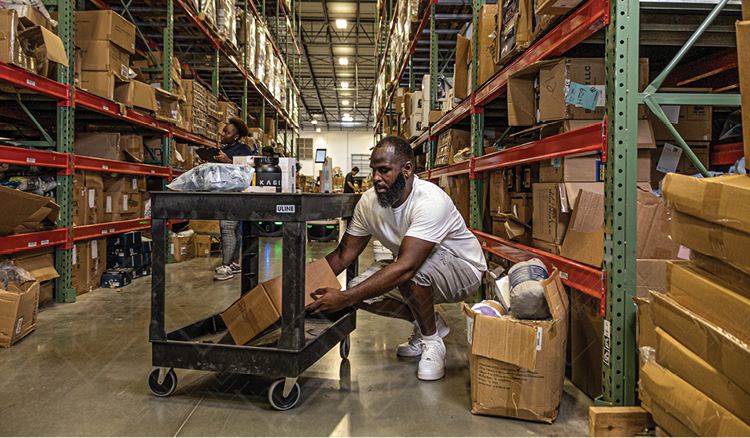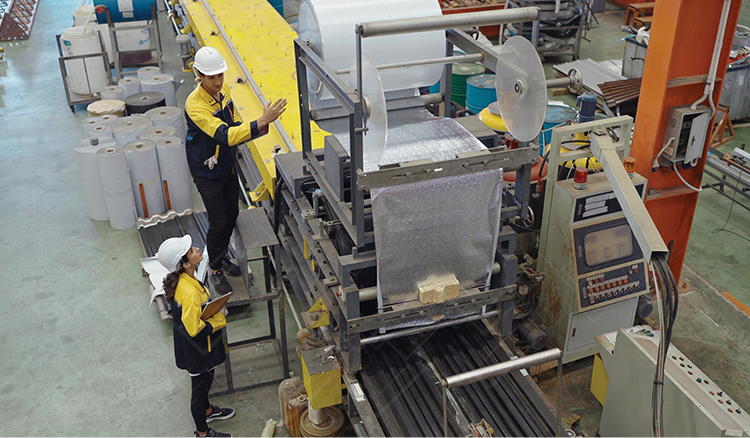The On-Demand Marketplace for Manufacturing

The workforce has a once in a lifetime opportunity on its hands as the adoption of IoT and digital operations capabilities accelerates. Digital is the driver that ultimately divorces most of the workforce from specialized and company-specific operational knowledge. The result is an environment where any able-bodied worker should be able to step into most operational environments and be immediately productive. Not only do we think this is nothing for the worker to fear, we believe this is a massive opportunity and the on-demand marketplace is the ideal vehicle by which to form the new labor paradigm.
How does the on-demand marketplace work?
The on-demand marketplace is based on local “labor pools” that form the supply side of the equation and digitally-enabled producers and distributors that form the demand side.
The idea of the supply side labor pools in this context is more specific than the notion of the labor force, in general, as a pool of workers. Rather, the labor pools in the on-demand marketplace are groups of workers with similar skill sets and work interests within a similar geography, connected and pooled by a common technology platform. The technology platform serves as the mechanism to connect businesses with the labor pools while reducing the administrative burdens associated with hiring/firing, qualification, payments, and benefits.
Workers in the on-demand marketplace have the ability to opt into a wide spectrum of work opportunities on an hourly or daily basis. Within the Veryable platform, we call these work opportunities “Ops” – discrete work elements that are posted by companies depending on their operational needs. Veryable Ops can be based on hourly pay rates, per task rates, or per unit of output rates depending on the type of work. The types of Ops can range from pick-pack-ship, kitting, subassembly, product assembly, etc.
It is the advancements in technology that enable this high level of labor fluidity and market making capabilities. Every operator in the labor pool gets real time visibility to all Ops posted in their area, the ability to opt into the Op instantly from their mobile device, and the operator enablement they need to perform the work properly on site.
What are the benefits?
The Veryable on-demand marketplace creates the win-win scenario needed to revitalize the manufacturing sector. For the labor force, access to the Veryable marketplace means that no qualified operator is ever structurally unemployed. It also provides higher levels of flexibility and diversity than one single full time employment opportunity could ever offer. The on-demand model embeds the work-life balance that today’s workforce is demanding: the ability to work when you want to, where you want to, and with no long-term work obligations. It also allows workers to broaden their skills and marketability through exposure to many different types of Ops, e.g., an operator with 20 years of warehousing experience can broaden his or her skills by performing Ops in assembly, test, or machining.
For businesses, the Veryable marketplace introduces a zero cost to scale opportunity. Businesses can tap into the labor pool on a daily basis to introduce new levels of labor capacity and specify terms in Ops that embed productivity and keep cost structures constant. Use cases can vary from using the on-demand model to address outliers or alleviate disruptions, responding quickly to rapid increases in order rates, or using piece rate bidding to increase labor productivity across a subset, or the full range, of internal labor requirements.
How should companies get ready for this?
As discussed in the Digital Manufacturing blog series, it is company owned operational intelligence that enables this ecosystem of on-demand labor. Many companies are beginning to explore how to embrace and develop IoT use cases and this will only accelerate in the next few years.
Forward thinking companies should focus on establishing core operational intelligence platforms that target high potential use cases as the main building blocks of their digital transformation. We believe one of these core tenets should be operator enablement, i.e., the management and dissemination of process information. Some of the operator enablement capabilities can be embedded with very little investment, e.g., monitors with digital work instructions and RFID based tracking and safety controls. Other capabilities like augmented reality, wearables, or real time operator alerts, will require a more robust operational intelligence platform and thus a more sizable investment.
However, a guiding principle in how to think about advantaged operations in the IoT age is how to harness product and process intelligence as company IP and deliver that IP to the shop floor so that any operator, regardless of background, can pick up a wrench or a cart and know what to do. Only then will your labor capacity be able to respond with the same flexibility and agility as the rest of your digitally-enabled assets.
Previous Posts
How Policy Constraints, Not Just Production Bottlenecks, Threaten Your Bottom Line
The Future of Manufacturing and Logistics
Create a free business profile today to explore our platform.





